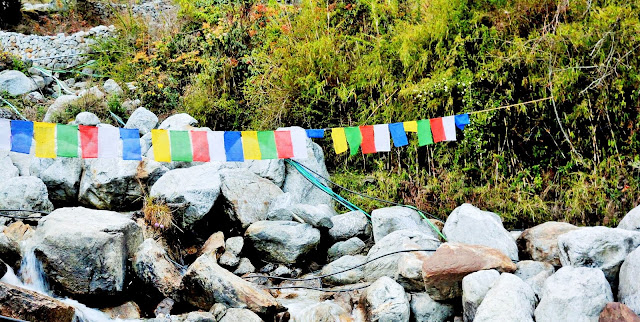 |
| Gurudongmar Lake: http://www.indiamike.com/india-images/pictures/gurudongmar-lake-7 |
I have been fortunate enough to travel
across the Ladakh region and obviously been in absolute love with that place
(and Buddhism) ever since. But every time I see the now famous pictures of the
Pangong Lake, I can’t help but reminisce about another trip undertaken almost a
decade back to pay homage to the Gurudongmar Lake. Lying at an altitude of more
than 17,000 ft , in the district of North Sikkim, near the China border, this
lake is one of the highest lakes in the world. I have known people who have
been inspired enough to attempt to reach this lake several times (the weather
in this region a bit tricky) and I have known people who simply do not realise
the existence and easy accessibility of this lake. So here is an attempt to
introduce it to those people, the exceeding beauty of the North Sikkim
District.
So, the Gurudongmar Lake, aside from
its obvious breath-taking beauty, is of religious importance to both the
Buddhists and the Sikhs. As per legend, Guru Nanak had visited this Lake and had
blessed it so that the water of the Lake does not freeze even at the height of
winter. Surrounded by snow-clad peaks, this Lake is also one of the sources for
River Teesta. Lying in a military controlled area, photography was restricted
and so was roaming around too far around the lake. But standing next to the
Lake in itself, in its icy surrounding and silence, is indeed an experience of
a lifetime.
The
Trip as far as I remember:
TO GANGTOK: It all starts from Gangtok which is more or less the main
base for Sikkim Tourism. It can be reached by car from Bagdogra Airport,
Siliguri if you are flying or from the New Jalpaiguri Railway Station, if you
are taking the train. Once you reach Gangtok the options are plenty, including
local sightseeing.
TO LACHEN: In between Gangtok and
Lachen, lies Mangan, the
headquarters of North Sikkim and also known as the Cardamom capital of the world. From there, a little ahead is the
town of Chungthang. This quaint
little town is where the Lachen River
and the Lachung River meet to form River Teesta. Also, as per the locals, Buddhist
Guru, Guru Padmasambhabwa (by the
way, Guru Nanak is said to have
followed his footsteps in this region) had spent some time in this town and
left his footprint on the rock where he rested. And, Lachen (“the big pass”) boasts
of a beautiful monastery and a panoramic view of the Himalayan Range. When we
were there, the town had only one tiny hotel and our car was loaded with most
of our food provisions, tourism was so new to this place. But, the locals were
unbelievably friendly and hospitable.
TO GURUDONGMAR LAKE: From Lachen, the
journey took us through Thangu. A
village sort of place with a teashop offering jackets and caps to sustain
against the cold of the Gurudongmar region. The land from here forward was
absolutely barren. Once you enter this region, photography is restricted. Around
5 Kms from the sacred Gurudogmar Lake, there is the Tso Llamo Lake which has the honour of being the highest lake in India (We were not allowed to visit this lake
at that point of time due to its proximity to the Chinese boreder but I believe
nowadays Indians are allowed after they obtain the necessary permits). On our
way back, we stopped at the Chopta
Valley which is the most perfect resting spot surrounded by mountains,
tributaries criss-crossing it and with its lush vegetation.
TO LACHUNG AND YUMESANGDONG: Lachung (“the small pass”) is accessed through the Chungthang valley. Situated on the confluence where the Teesta River originated, this town has a Tibetan charm with its own colourful monastery. Yumthang Valley on the way, is known as the valley of flowers with a riot of colors - various species of rhododendrons and some orchids. It had a picturesque little resort and a bridge on the Teesta River with a Shivmandir. Further still is Yumesangdong known as the Zero Point. It affords a brilliant panoramic view of snow clad mountains and some snow on the ground as well, while you are at it.
TO KATAO: This is a place we were unable to reach. It was closed down due to on-going military exercise. A huge loss on our part, as Katao is what the locals declare to be the crown jewel of the region and we had a hard time imagining anything more beautiful than what we experienced in that week. What we did witness though was a Bofor gun being maneuvered around the hairpin bends of the roads while we were stuck helpless at the side of the road. Some memories!




















0 comments:
Post a Comment